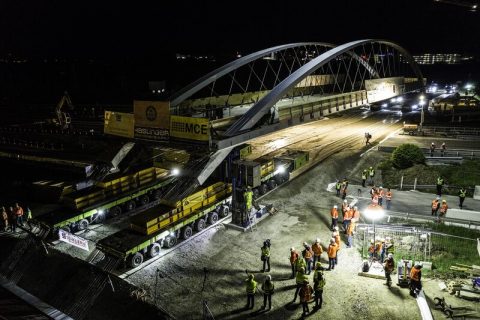
Schmidbauer moves heaviest load ever: a 1,600-tonne bridge
Schmidbauer has transported the heaviest weight in its history: the 1,600-tonne and 130-metre long Streitgrabenbrücke which has now been installed over the A8 highway near Stuttgart in Germany.
Schmidbauer had to transfer the bridge from the pre-assembly site in a field near the A8 highway to the point of installation, where it had to be positioned and set down precisely on four piers. The company had been planning the move for over a year.
To move the bridge, one of the most important traffic arteries in Germany, the A8 motorway, was completely closed off in the weekend of 2 and 3 May. The bridge was pushed onto the highway “at a snail’s pace” on four heavy-duty SPMT’s with 56 axle lines and 224 tires to minimize the load on the ground. The total transport combination weighed 2,000 tonnes.
Although the distance from the pre-assembly area to the job site was only around 150 metres, the construction management team had calculated that a two-hour drive was required. “The biggest challenge on the route was to drive absolutely synchronously with the four SPMT transport platforms in a loose coupling mode”, explains Stefan Schmidbauer.
The company had formed four individual SPMT transport platforms with 14 axle lines which were then driven in a loose coupling mode formation. 50 employees were needed to ensure safe transport and four 2,000 horsepower power packs from Scheuerle provided the drive.
The centre distance between the platforms was 80 metres whilst the width between the transport modules measured seven metres. The route was previously paved but the SPMT transporters still had to compensate for height differences in both the longitudinal and transverse directions to the road. “In particular, we had to make sure that the transport did not move into an inclined position due to the difference in height between the two lanes”, Schmidbauer says.
At a slow-motion of less than one kilometre per hour, the main part of the bridge was in its final position on provisional supports at around 04.00 on Sunday morning. From the end of 2021, the Stuttgart subway system will use the bridge to move people between the city’s airport and exhibition centre.
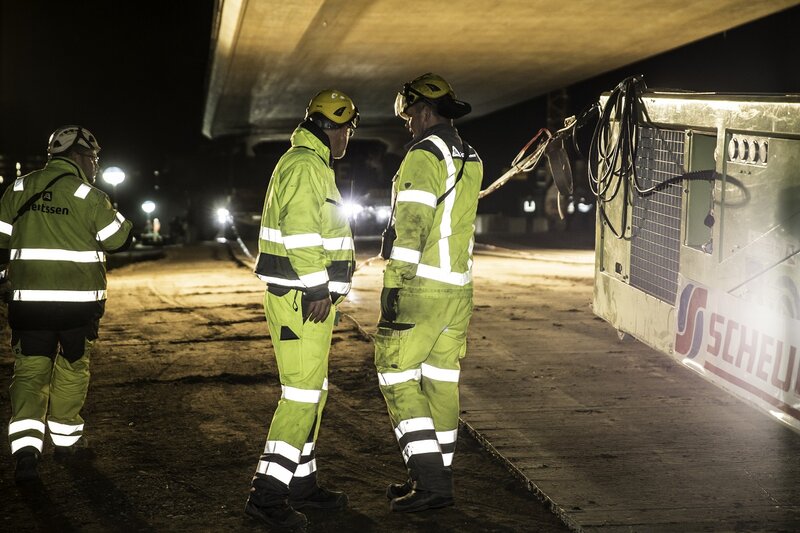
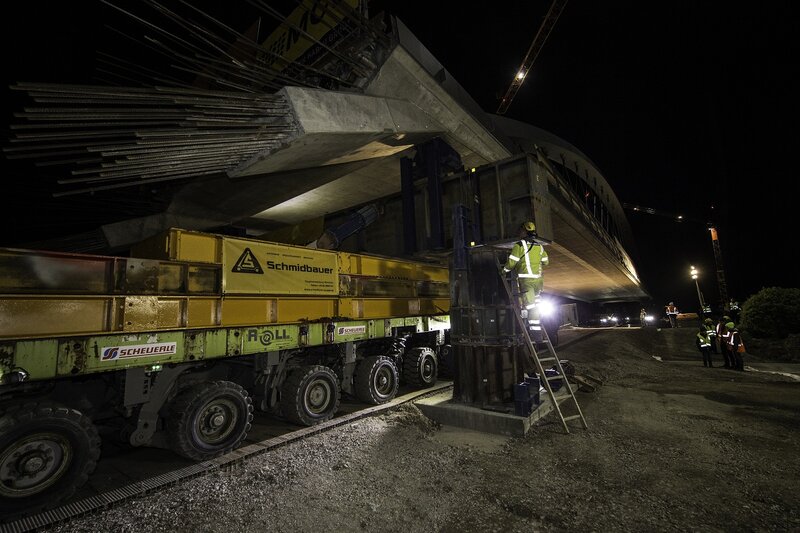
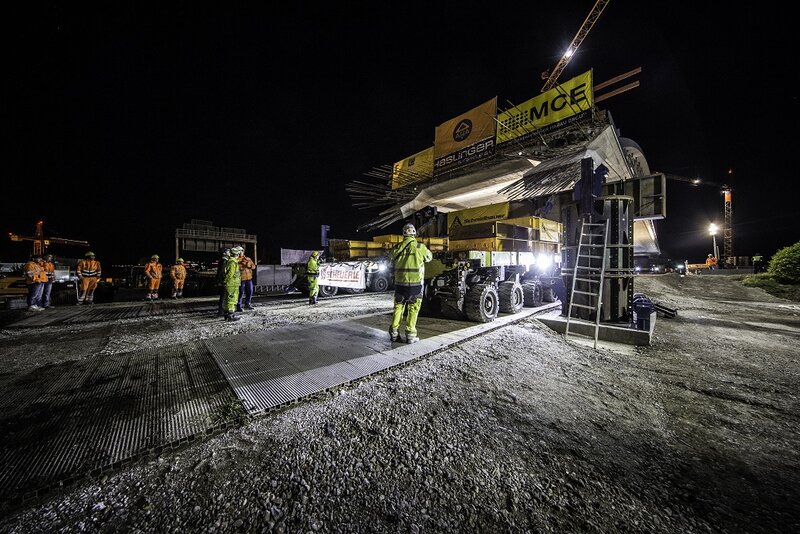
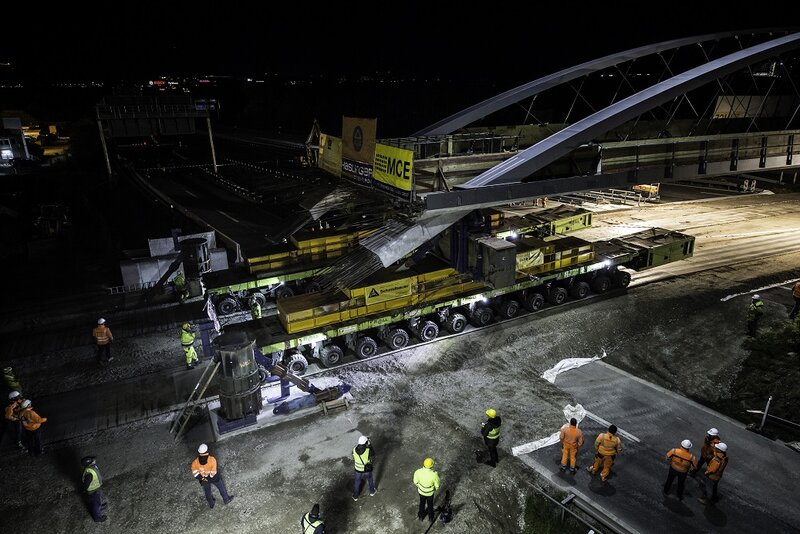
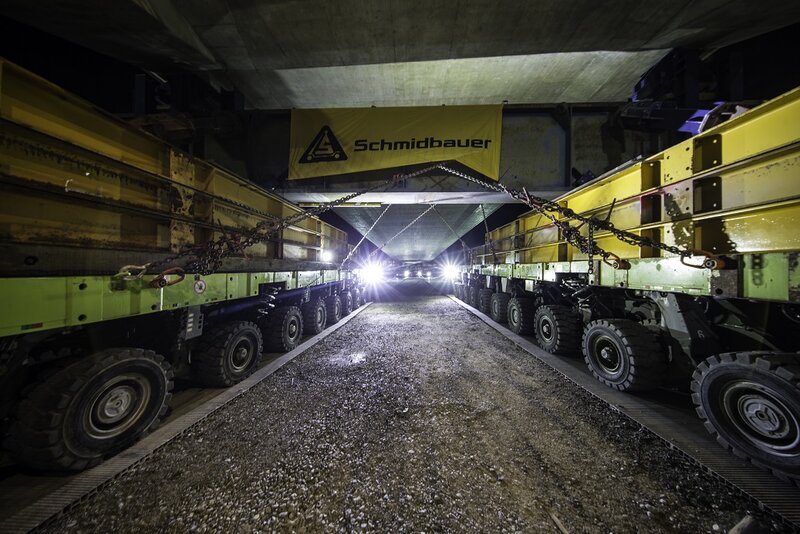
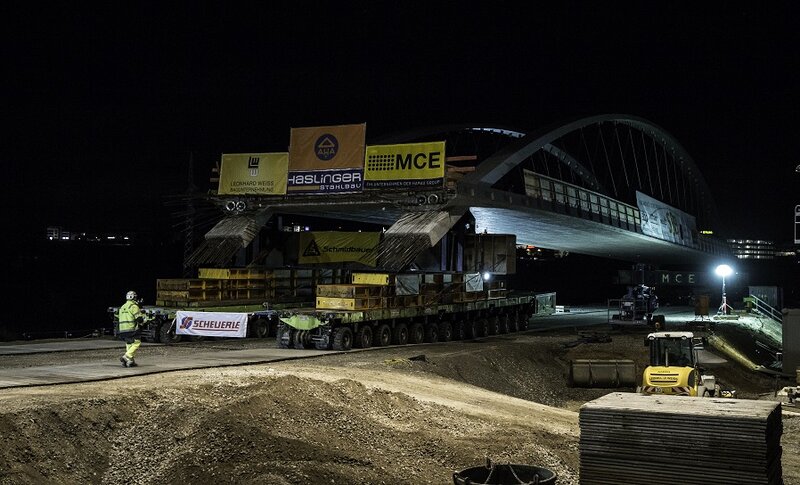
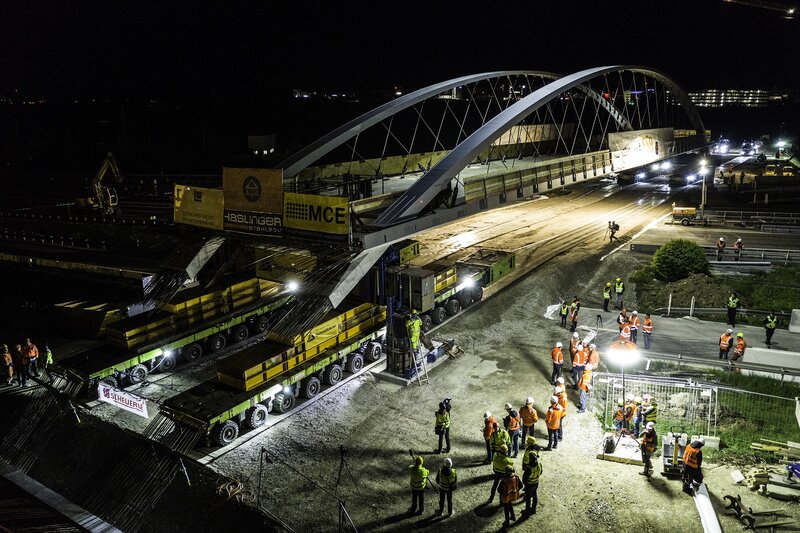
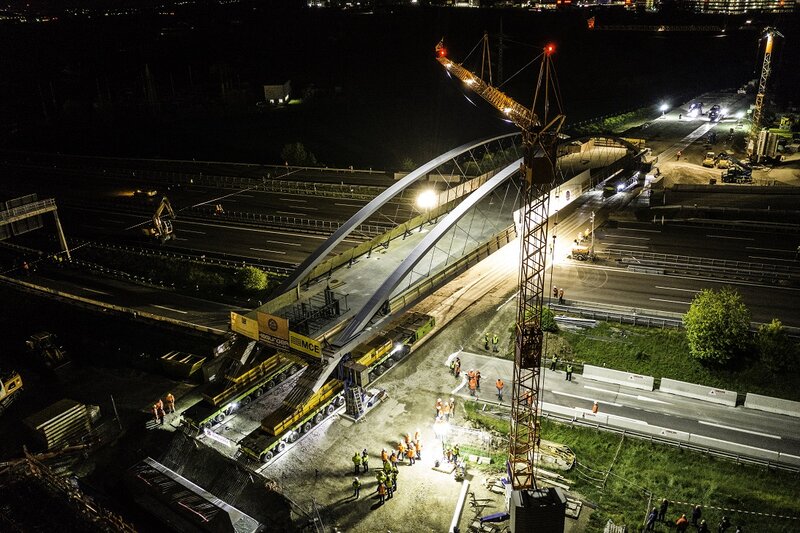
Photos: Schmidbauer




